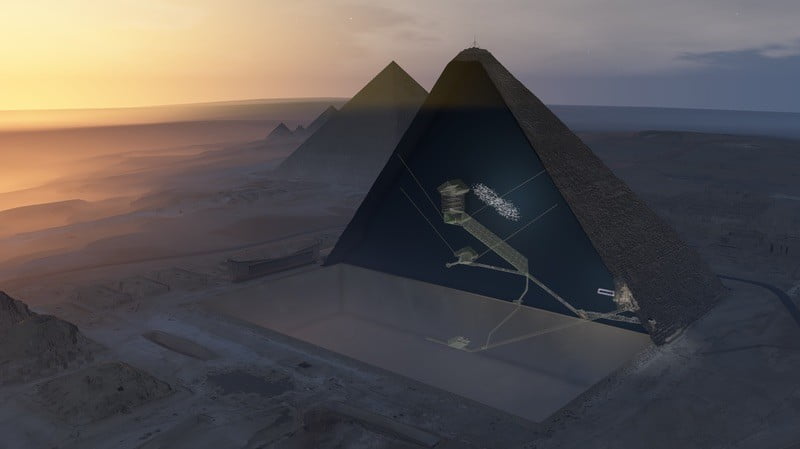After more than 40 years, the pyramids of Egypt are again revisited for the same purpose, to use non-invasive techniques to observe interior structures. The ScanPyramids project started in 2015 with the aim of studying the various pyramids in Egypt. The first to be studied was the Great Pyramid of Giza, or Pyramid of Chephren as it is also designated, and is still an ongoing study.
In this recent case, new technologies were used, combining infrared thermography, which creates a thermal map to help revealing differences in density, with radiography of muons that more accurately detects the presence of structures inside the monument.
Different international teams work on the project and the most recent results were published in 2017 culminating in the discovery of a big unknown void space. The newly discovered chamber is located 40 or 50 meters above the Queen's Chamber, with a length of more than 30 m and a width similar to that of the Large Gallery. In addition, a small, previously unknown horizontal tunnel was discovered near the entrance to the pyramid.
In the detection of the muon flux three different types of detectors were used: resistive plate chambers (RPCs), nuclear emulsion films and scintillator hodoscopes, each operated by a different team. The use of different techniques allows teams to complement information and to obtain much more accurate results. This is one of the most ambitious missions to date that makes use of muon detection for recognition of internal structures.
ScanPyramids Official Webpage
Publication:
"Discovery of a big void in Khufu’s Pyramid by observation of cosmic-ray muons" (Morishima et al., 2017)
